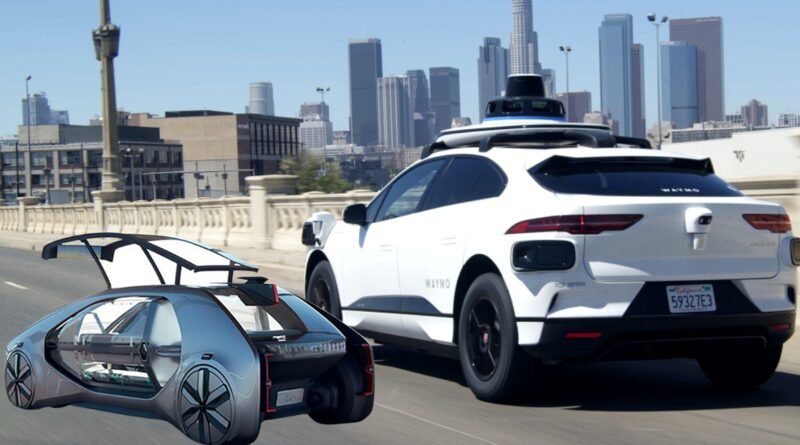Inside the Waymo Factory: How Alphabet Is Building the Future of Robotaxi Mobility
Waymo, a subsidiary of Alphabet Inc., is spearheading the next generation of transportation through autonomous vehicles. At the heart of this revolution lies its state-of-the-art robotaxi factory in Mesa, Arizona. As self-driving technology transitions from experimental to operational, Waymo’s efforts represent one of the most significant advances toward a driverless mobility future.
🚗 Mesa, Arizona: The Nerve Center of Waymo’s Robotaxi Production
Opened in partnership with Magna International in 2023, Waymo’s Mesa facility is the first in the world dedicated exclusively to manufacturing L4 autonomous vehicles at scale. The factory specializes in retrofitting Jaguar I-PACE electric SUVs and integrating them with Waymo’s sixth-generation Driver technology.
Key Stats:
- Target fleet: 3,500 robotaxis by 2026
- Vehicles produced per year: Over 2,000
- Average integration time per vehicle: Under 30 minutes
- Technology Partners: Jaguar Land Rover, Magna International, and Zeekr (Geely)
This facility also plays a role in validating and refining vehicle systems using digital twin simulations and real-world calibration tracks.
🌐 Waymo Driver: The Brain of the Robotaxi
Waymo’s sixth-generation Driver integrates a proprietary suite of sensors, AI algorithms, and decision-making frameworks. Each I-PACE vehicle includes:
- LiDAR system: 360° high-resolution perception up to 300 meters
- Radar array: Enhanced detection in inclement weather
- Vision system: Multiple HD cameras for object recognition and lane detection
- AI and ML stack: Trained on over 20 million real-world miles and 20 billion simulated miles
- Onboard compute: NVIDIA DRIVE Orin processors
These elements work in unison to provide a fully autonomous (SAE Level 4) driving experience in urban and suburban environments.
📈 Growing Market and Strategic Expansion
Waymo’s robotaxi services operate in Phoenix, San Francisco, Los Angeles, and Austin. With over 250,000 paid rides weekly, Waymo’s commercial service has grown 4x since 2023.
Expansion Plans (2025-2026):
- New cities: Atlanta, Miami, Washington, D.C.
- International pilot: Tokyo (in partnership with Mitsubishi UFJ and Sony)
- Fleet collaboration: Zeekr for a custom-designed passenger-centric robotaxi model
Autonomous Vehicle Market Projections:
- Global AV market size expected to reach $1.3 trillion by 2030 (McKinsey)
- North America to account for ~38% of AV ride-hailing revenue by 2030
🔒 Safety, Compliance & Sustainability
Waymo prioritizes safety through rigorous testing and regulatory collaboration.
Safety Data:
- 73% fewer injury-related crashes compared to human drivers
- 48% fewer police-reported collisions
- Logged over 50 million autonomous miles as of 2025
Sustainability Measures:
- 100% electric fleet: No tailpipe emissions
- Solar-powered charging hubs in Arizona and California
- Estimated CO2 savings: 250+ tons per week
🏛️ Inside the Factory: Tech Meets Efficiency
The Mesa facility employs Industry 4.0 standards:
- Automated guided vehicles (AGVs) for intra-factory transport
- Real-time analytics via IoT sensors
- Digital twins for quality control and fault prediction
- Lean manufacturing principles
Each vehicle undergoes:
- Sensor calibration
- Software installation
- Test runs in private urban test tracks
- Remote diagnostics via secure cloud
❓ FAQs: Waymo Robotaxi and Factory
What is the capacity of Waymo’s factory in Mesa?
It can retrofit over 2,000 vehicles annually and expand further with modular upgrades.
How does Waymo ensure ride safety?
Through redundant systems (LiDAR + cameras + radar), constant remote monitoring, and compliance with FMVSS and local DOT regulations.
Can Waymo operate in bad weather?
Yes. The Waymo Driver’s sensor fusion system is tested for rain, fog, and night-time scenarios.
What vehicles are used for Waymo robotaxis?
Jaguar I-PACE electric SUVs and upcoming Zeekr-designed robotaxis.
✨ The Road Ahead
Waymo continues to push the envelope in autonomous mobility with investments in AI, cloud architecture, and smart city partnerships. As urban populations grow and demand for sustainable transport rises, Waymo is well-positioned to become the backbone of the autonomous transportation ecosystem.
Whether it’s your next airport ride or daily commute, the future of mobility may just be a Waymo away.




